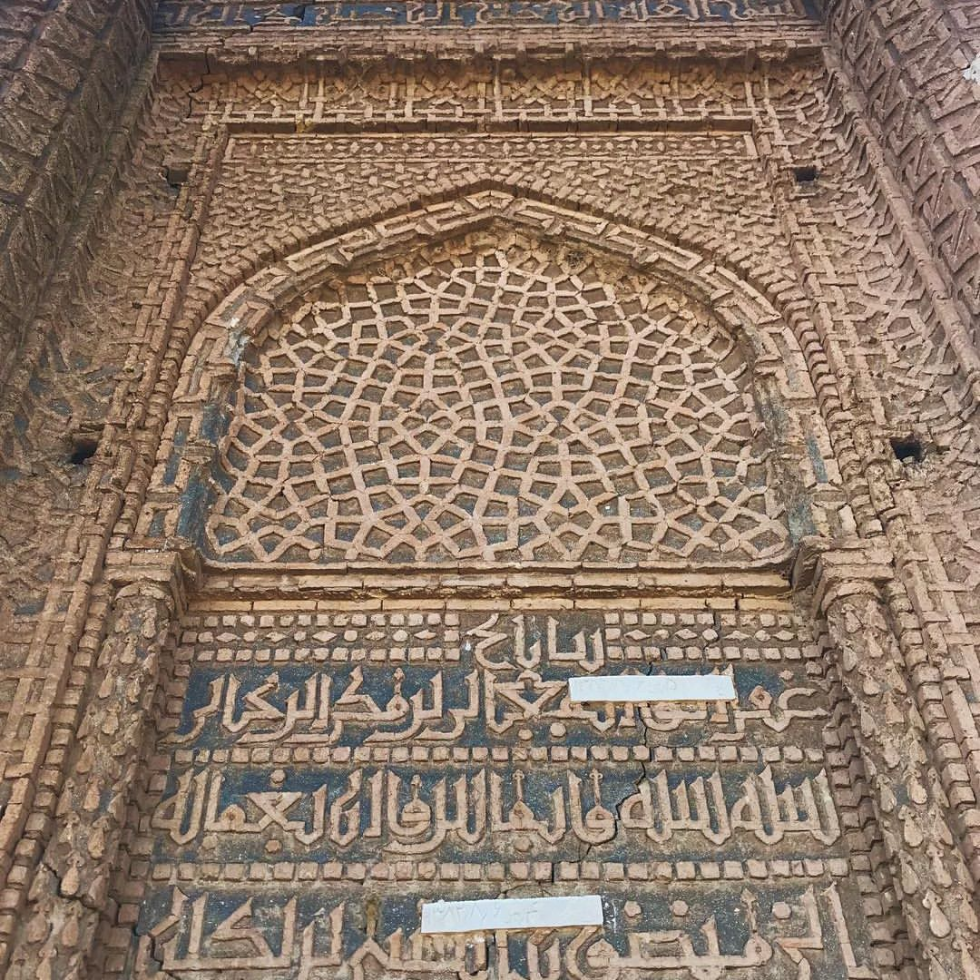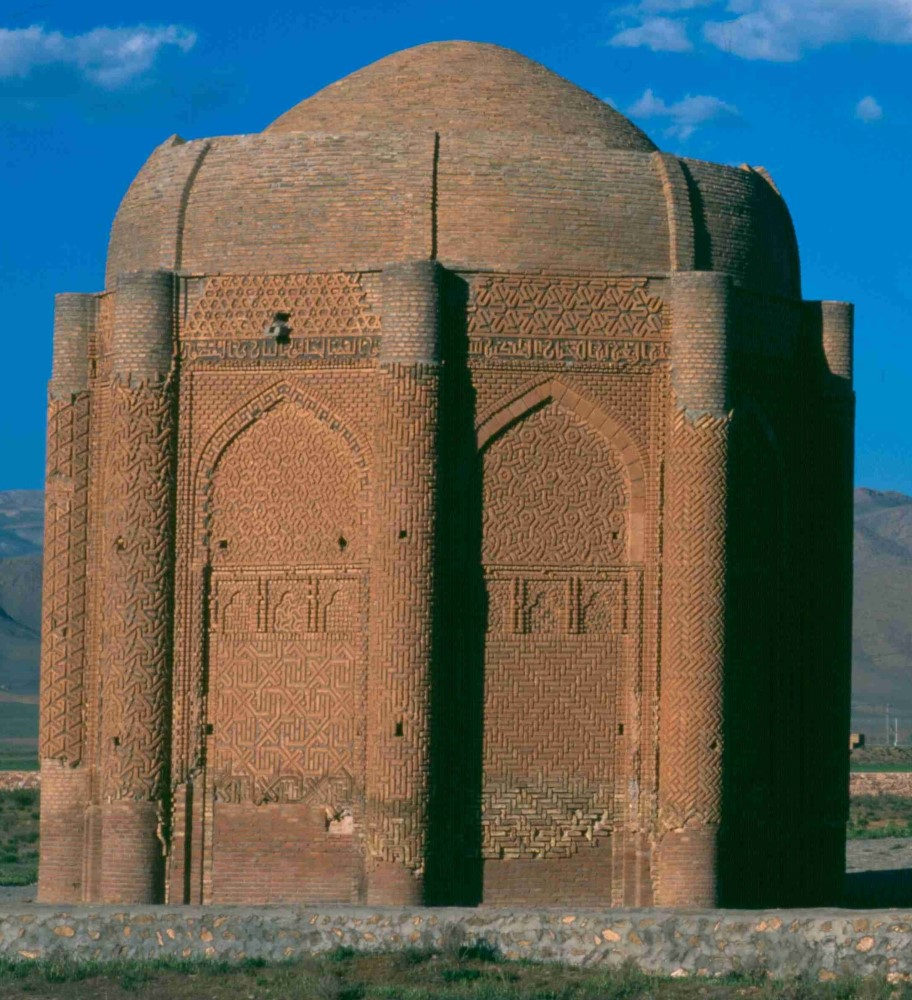Kharraqan 2
The western tower is built in 1093 by the same architect, 25 years later than the first one. Where the oldest bears 30 patterns, the western tower bears as much as 70 patterns. Remarkable is the complicated multi-
interpretable tympan.

Pentagons are apparent. They are arranged in quartets, defining squares. But one can define different grids and unit repeats.
- You can define a square grid and a tiling created by glide mirroring.
- Following lines in clay a hexagonal grid can be defined.
- When rotating these hexagons by 90° they define, superposed with the original ons a grid of equal irregular pentagons.
- This last grid can be read too as a grid of 8-pointed bow ties.
